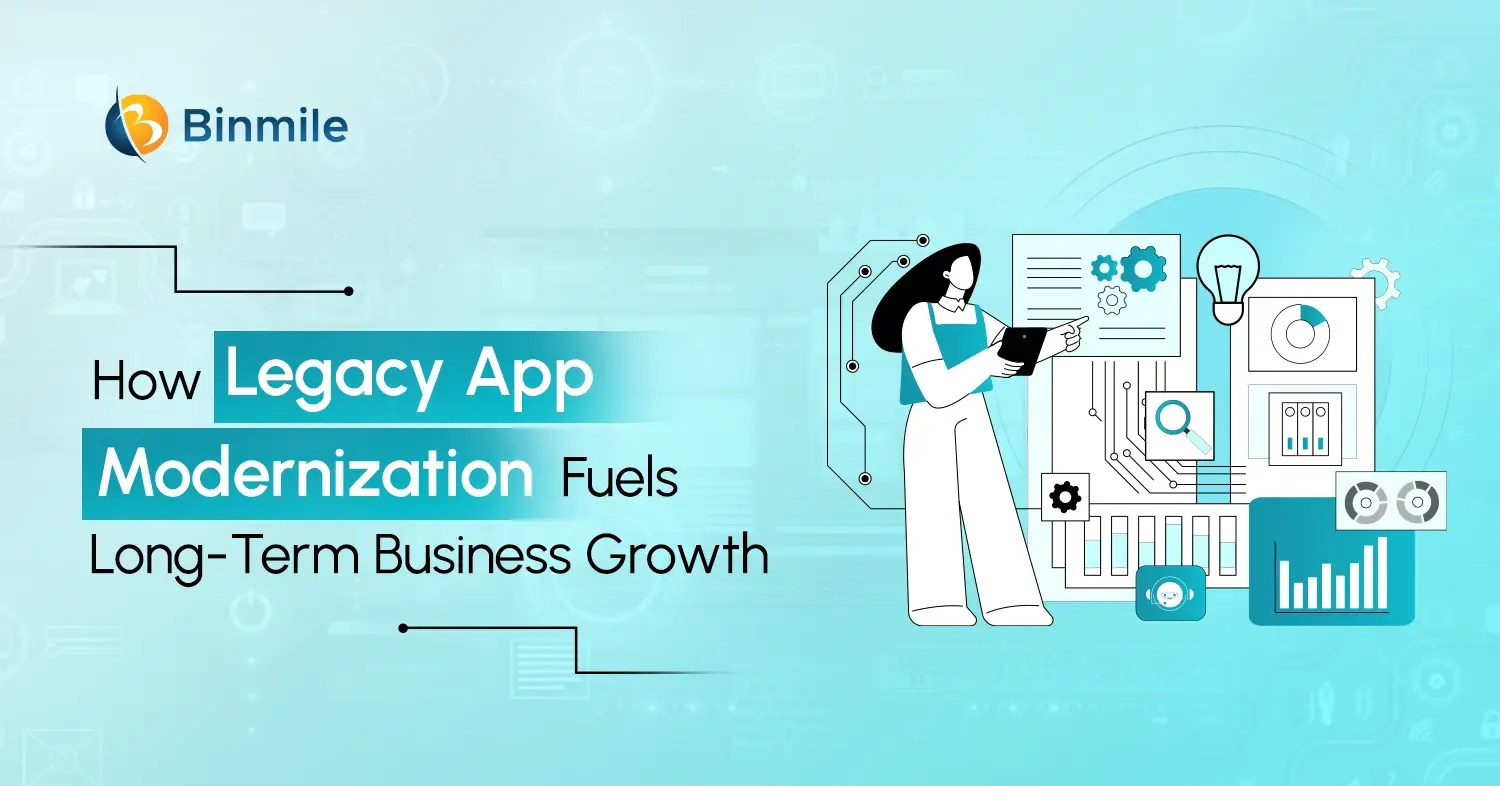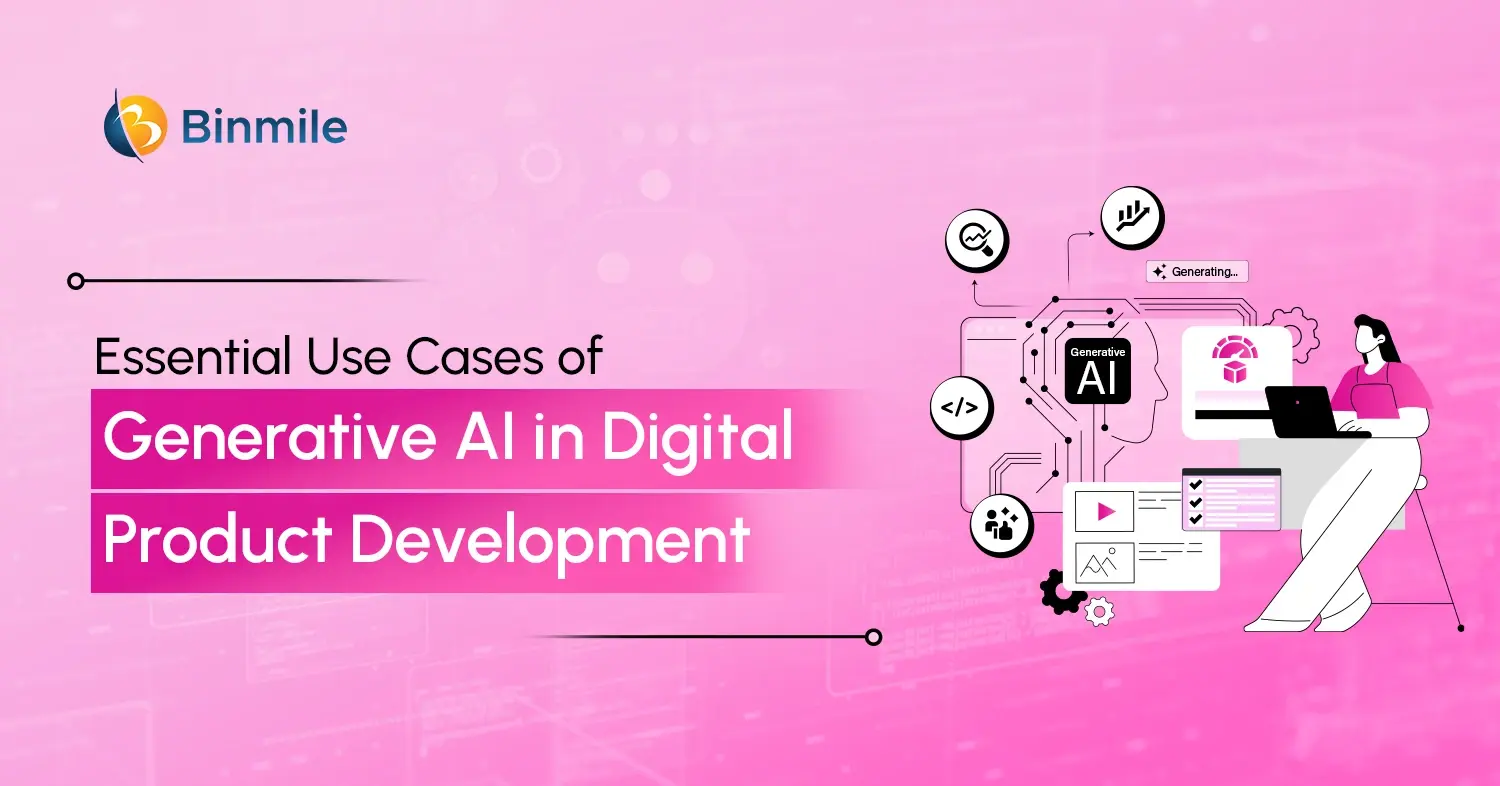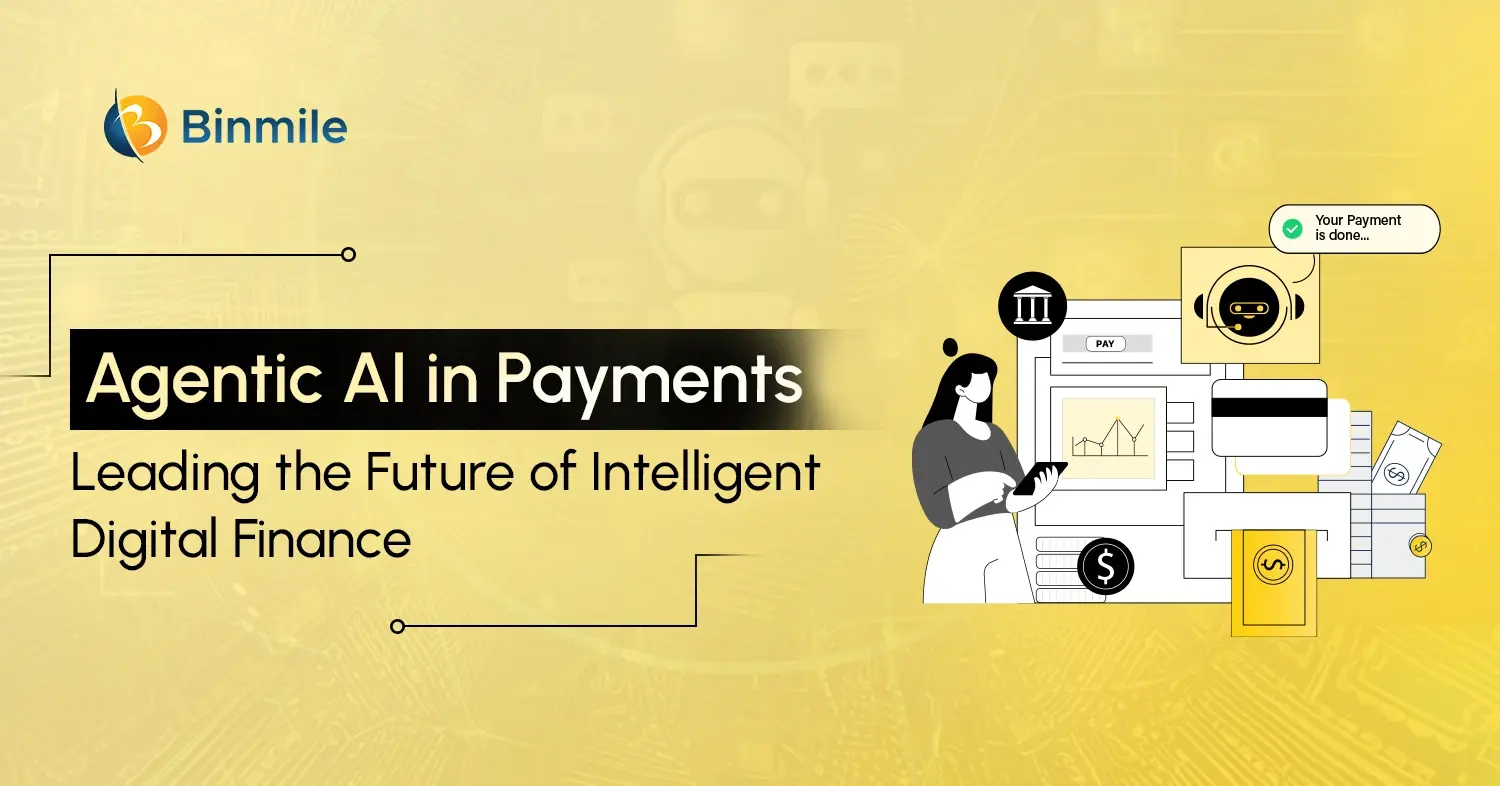Application modernization, when implemented effectively, can yield far-reaching benefits for your business. For starters, it can enhance the performance of your legacy system with modern technology. It can drive benefits, such as a productivity boost, reduced operational costs, low technical debt, better scalability and agility in your business, among other upsides. The value of app modernization, both in terms of revenue and productivity, is great. The market size of application modernization services was reportedly valued at $19.8B in 2022 and is anticipated to grow at a CAGR of 10% during the forecast period between 2023-2032.
Though application modernization may sound like an exciting business strategy, it requires pre-planning stages tied to your business needs and purpose. You just can’t migrate your apps from on-premises to Cloud-hosted environments just because everyone is going for it. You need a proper strategy, plan, and roadmap, and most importantly, do you need legacy application modernization?
In this write-up, we are discussing top application modernization challenges that you can’t afford to ignore if you are planning to upgrade your legacy system soon. Besides, the write-up also supplies you with a solution guide for these challenges to ensure you have a clear understanding of adopting the right strategy and steps to derive maximum value out of application modernization approaches.
Why Does Your Business Need Legacy Application Modernization Service?
Modernizing legacy applications is a benefits-inducing business strategy for any organization. Here are some top reasons why you should implement it in your business.
1. Solution to Expensive Maintenance of Legacy Applications
Legacy application modernization offers you a great solution to the expensive maintenance of your legacy apps. Businesses suffer measurable budgetary outlays on maintaining outdated software, which doesn’t render much benefit to the business itself.
For instance, most outdated software suffers performance issues over time and is incompatible with modern and advanced technology and processes. Moreover, maintaining archaic systems also warrants the relevant skill sets and experience of your IT professionals. If you don’t have them on your team, their recruitment will multiply your IT cost considerably.
Therefore, modernizing your legacy systems sounds like a great solution to avoiding expensive maintenance of your outdated software. It will reduce costs and complexity for your business.
2. Performance Boost With the State-Of-The-Art Technology
Outdated applications pose critical threats to day-to-day business operations, given the unbridled rampancy of cybersecurity threats. Therefore, modernizing these apps paves the path for identifying opportunities and lingering threats to your existing software. Modernized apps showcase performance boosts far better than their legacy counterparts.
They are compatible with modern technology and devoid of bottlenecks. Modernized apps would lay the groundwork for enhanced productivity for your business through automated efficiency. Your business will perform well with less manual effort, fewer downtimes, and lower costs.
3. Security Enhancement for Risk-Free Business Operations
There is always this lingering fear of security issues as long as your business runs on legacy applications.
Once routine updates for legacy apps are no longer supported, your business becomes more vulnerable to security risks, as archaic systems can’t effectively prevent them. Once these systems are hacked, not only does confidential business data get compromised, but it also puts your business reputation in an embarrassing situation that takes years to recover from.
Therefore, modernizing legacy apps offers a robust solution that can allow your business to boost functionality and security. Fully-modernized apps are more impenetrable against security risks, like data theft or hacks. You can also prevent such risks by updating your security patches from time to time and using modern SSL encryption, among other security measures.
Ready to Upgrade Your Legacy Systems? Let our experts guide you through a seamless modernization journey tailored to your business goals.
Key Challenges Organizations Face in Modernizing Applications
Most organizations hesitate to implement app modernization in their business for many reasons. Firstly, they are not sure how migrating from familiar technologies that their employees have been using would serve the same level of familiarity post-migration to a cloud platform. Secondly, they are not sure whether legacy modernization would result in efficiency, agility, scalability, and a productivity boost as claimed.
Most importantly, organizations are also not aware of certain scenarios, like the estimated cost of app modernization, the timeline it would take, the availability of skilled staff to make app modernization successful, and whether migrating to the cloud would be helpful for businesses.

1: High Cloud Migration Costs
Organizations may face challenges, like recategorization of old data being migrated to the cloud to ensure compatibility with the new app architecture. Other challenges may include migrating unstructured data and resorting to manual data input that may result in data loss or corrupted data. Apart from these challenges, an organization may also encounter problems in cloud migration, like skills shortage, IT skill gap, no recovery provisions for data loss, etc.
Solution: To ensure easy data migration to the cloud platform, a business can rely on a three-phase process known as ETL (Extract, Transform, Load). It will also result in an effective solution to the differences in encoding. Moreover, choose a cloud vendor offering solutions to accommodate your data migration needs. For example, AWS provides similar solutions known as Snowball and Snowmobile. Don’t forget to run a careful assessment of your business needs regarding database migration to a cloud platform. This means analyzing outdated data and components, and also prioritizing workload migration.
2: Lack of Skilled Professionals
Legacy app modernization, as outlined before, is not an easy task. It requires someone who is tremendously experienced and an expert in it. Therefore, your business may be in for expensive onboarding of skilled IT professionals with relevant experience in understanding cloud migration processes and other technical nuances related to it. A successful app modernization largely depends on the competence of your team. Onboarding the right professionals would undoubtedly pile pressure on your IT budget.
Solution: Train your employees to increase their skills commensurate with what it takes to result in a successful app modernization. You can also consider hiring a reputable company offering top-of-the-line application modernization services. This recommendation has its upsides, like saving you from onboarding new staff and getting to see your database being migrated to the cloud platform without hampering your core business operations. Moreover, system integration services also conduct a thorough assessment of your existing legacy systems to ensure efficient modernization without a technical hitch.
3: Risks and Conflicts
Legacy apps have a monolithic structure, an enormous code base, and numerous functionalities. Therefore, a small update could result in multiple conflicts within a legacy system. Moreover, the massive amounts of documentation and undocumented features associated with legacy apps pose risks when interfering with their source code. They are too complex to be reorganized to make way for storage space optimization. There is also a challenge in manually systematizing legacy data to a new database, as the entire process is cost-intensive and time-consuming.
Solution: Chunking could be an effective approach for your legacy app modernization. It is a technique that allows the segmentation of large amounts of data into smaller, manageable sections to maintain the understandability and relevancy of information. An organization can also go for cutting-edge solutions like Cleo, Glue42, and SyncApps to build a unified user experience and improved workflow.
4: Cost-Intensive Approach
Granted, app modernization looks like a beneficial strategy for your business. However, it is also a cost-intensive or financially draining approach. If you involve factor-wise considerations, in terms of infrastructure, application replacement, IT training, etc., the cost would soar accordingly. In addition, most organizations end up using their internal and third-party resources in the time-consuming process of planning, developing, testing, and deploying their legacy modernization projects. Therefore, both investment cost and project duration are affected, respectively, in terms of higher cost and unpredictable timeline.
Solution: Start a thorough assessment of your legacy code. Get rid of the superfluous ones. Consider an app modernization strategy commensurate with your business needs. Hire a well-reputed cloud consulting service to cut short on project duration for faster results.
5: Vendor Lock-In Situation
A vendor lock-in situation refers to your state of being stuck with a single cloud provider. Consequently, it throttles the scale of innovation you wish to bring to your business post-legacy migration. However, the challenge starts to emerge when switching to another cloud vendor due to legal hurdles, costs, or technical incompatibilities. One of the reasons why vendor lock-in is bad for legacy migration is the unpredictable price surge by the cloud provider due to rising demand. Another reason relates to deteriorating service quality over time with a particular cloud provider, resulting in problematic performance for your business down the line.
Solution: Since there are some well-reputed cloud vendor providers already in the market, choosing the best one is a difficult chore. Still, research your potential cloud vendors based on the values they offer and other quality parameters. Visit their websites, read their testimonials, seek their clients’ feedback, read their case studies, etc. Also, there should be an exit strategy in the contract with your cloud vendor. It should also reflect the implementation roadmap and cost estimations.
Connect with us to transform outdated applications into high-performing, future-ready solutions that drive business growth.
Top Benefits of Legacy Application Modernization for Businesses
Modernizing legacy applications is not just a technical upgrade—it’s a strategic move that delivers long-term value. Here are the key benefits for businesses:
- Boosts Operational Efficiency: Modern systems streamline processes, reduce system lag, and improve overall performance.
- Reduces Maintenance and IT Costs: Legacy modernization lowers ongoing maintenance expenses and eliminates costly outdated infrastructure.
- Strengthens Security and Compliance: Newer applications include built-in security features and help organizations meet evolving data protection regulations.
- Improves Scalability and Flexibility: Modern applications can easily scale with business growth and adapt to digital transformation needs.
- Enhances User Experience: A modern interface and faster response times improve both customer satisfaction and employee productivity.
Winding up
Application modernization is today’s one of the most sought-after strategies for organizations running their business on outdated applications. If implemented well, application modernization services will drive automated efficiency to your business. From improved operational excellence to providing solutions to expensive maintenance of your legacy infrastructure, the upsides of an application migration service are many. However, app modernization is not an easily implementable approach. It has its own level of challenges for a business to deal with. With our solution guide against each app modernization challenge, we are sure you may have some insights into dealing with the same in your journey for successful app modernization.
Are you facing legacy app modernization challenges? Overcome them with Binmile! We rank worldwide as a top-notch provider of application migration services and cloud app modernization, ensuring comprehensive solutions for your business. For detailed information, schedule a call with your experts.
Frequently Asked Questions
Application Modernization Solutions encompass a range of strategies, methodologies, and technologies aimed at updating, enhancing, or transforming legacy applications to meet current business needs and technological standards. These solutions address challenges related to outdated architectures, technology stacks, and functionalities by leveraging modern development practices, cloud-native architectures, and emerging technologies.
Application Modernization Solutions offer several benefits, including:
- Improved Performance: Enhancing application performance, scalability, and responsiveness to meet the demands of modern users and business requirements.
- Enhanced Security: Strengthening security measures, ensuring compliance with regulatory standards, and protecting sensitive data against cyber threats.
- Cost Savings: Reducing maintenance costs, operational expenses, and technical debt associated with managing outdated or inefficient applications.
- Agility and Flexibility: Increasing agility, adaptability, and innovation capabilities to respond quickly to market changes, customer needs, and emerging opportunities.
- Enhanced User Experience: Providing better user experiences, intuitive interfaces, and enhanced functionalities to improve user satisfaction and engagement.
Application Modernization initiatives often face several challenges, including:
- Legacy Infrastructure: Dealing with outdated infrastructure and legacy systems that lack support for modern technologies and architectures.
- Complexity: Managing the complexity of legacy applications, including tangled codebases, undocumented business logic, and outdated dependencies.
- Integration Issues: Addressing integration challenges when modernizing legacy systems to ensure seamless interoperability with existing applications and data sources.
- Data Migration: Handling data migration from legacy systems to modern platforms while ensuring data integrity, consistency, and security.
Technical challenges often include:
- Outdated Technology Stack: Legacy systems may be built on outdated technology stacks, making it challenging to integrate them with modern platforms and tools.
- Complex Dependencies: Legacy systems often have intricate dependencies, making it difficult to refactor or migrate them without disrupting critical business processes.
- Data Migration: Transferring large volumes of data from legacy systems to modern databases or storage solutions can be complex and time-consuming.
- Legacy Integration: Integrating legacy systems with modern applications or services while maintaining data integrity and functionality poses significant technical hurdles.









